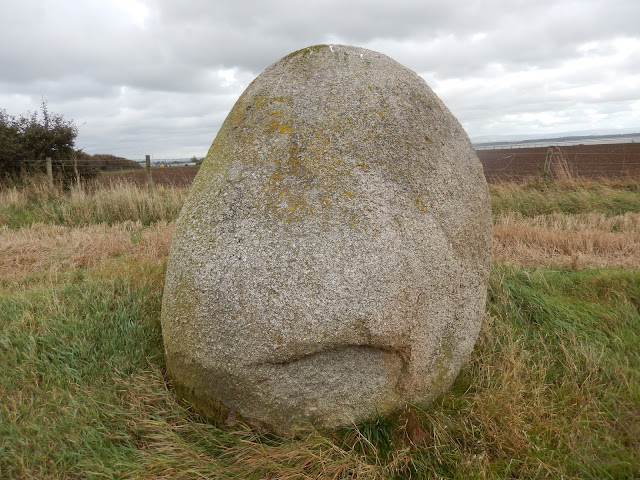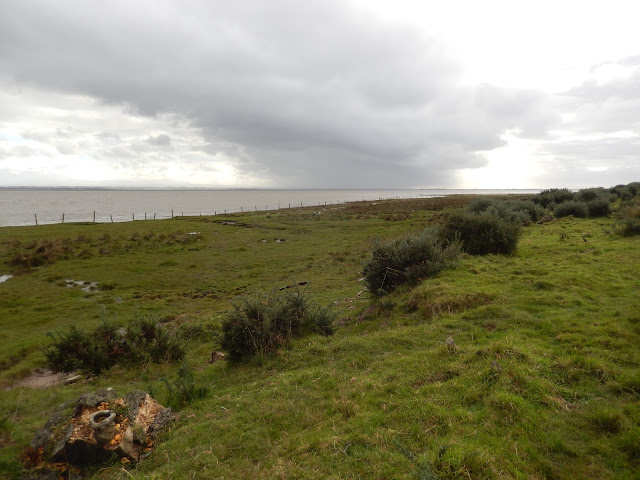Whenever I drive to Scotland, my first stop in the country is Clochmabenstane, a megalith standing in a field of Old Graitney farm, near Gretna. Along with a smaller stone set into a nearby hedge, Clochmabenstane is all that is left of a stone circle dated back to around 3000 BC.
The main stone, which is also called the Lochmaben Stone, is weathered granite, weighs about ten tons and is seven feet high and about 18 feet around. As for the etymology of Clochmabenstane, ‘cloch’ seems to suggest the modern Gaelic ‘clach’, meaning stone; ‘maben’ is related to Mabon (also known as Maponus), the Celtic God Mabon map Modron, Son of the Mother ; and ‘stane’ is a Scottish word for ‘stone’. One suggested meaning for the name is the ‘stone or burial place of Mabon’.
I first found out about the stone in Nikolai Tolstoy‘s The Quest for Merlin, where he suggests that the stone was the site of ceremonies for the cult of Maponus/Mabon and that Merlin may have been the chief druid in charge of them. I have used some elements of his suggestion in my novel, which is why I like to visit the megalith and get a sense of the stone itself and the surrounding area.
The Clochmabenstane is reached from a carpark near the farm, on the Solway Firth, with a walk across the boggy shoreline of the estuary, a climb over a wire fence, and a stroll up the mild slope alongside a hawthorn hedge. As I walked along the shore, with bramble bushes next to the property line, a rabbit popped out of one gorse bush, looped down the path and dashed into the hollow at the bottom of another bush. When I got nearer to the stone, masses of geese rose from a nearby field, milled around, then headed west.
Below are some photos of my visit:
 |
| The tide was slowing retreating as I walked to the stone |
 |
| Milling geese making a racket |
 |
| The Clochmabenstane surrounded by round haylage bales, which my father once called dongels, though I haven’t found that usage mentioned anyway else. |
 |
| The east weathered and yellow-lichened face of the stone |
 |
| The south face/edge of the stone |
 |
| The west face of the stone, with its suggestion of a nose |
 |
| The north face of the stone |
 |
| The smaller stone, which has been set into the hawthorn hedge |
 |
| The shoreline with the tide moving out |
 |
| Another of my dramatic cloud photos |
 |
| View across the Solway Firth that, in ancient times, could be forded when the tide is fully out by crossing mudflats and wading across a narrow stretch of water |
 |
| Another view of the firth |
